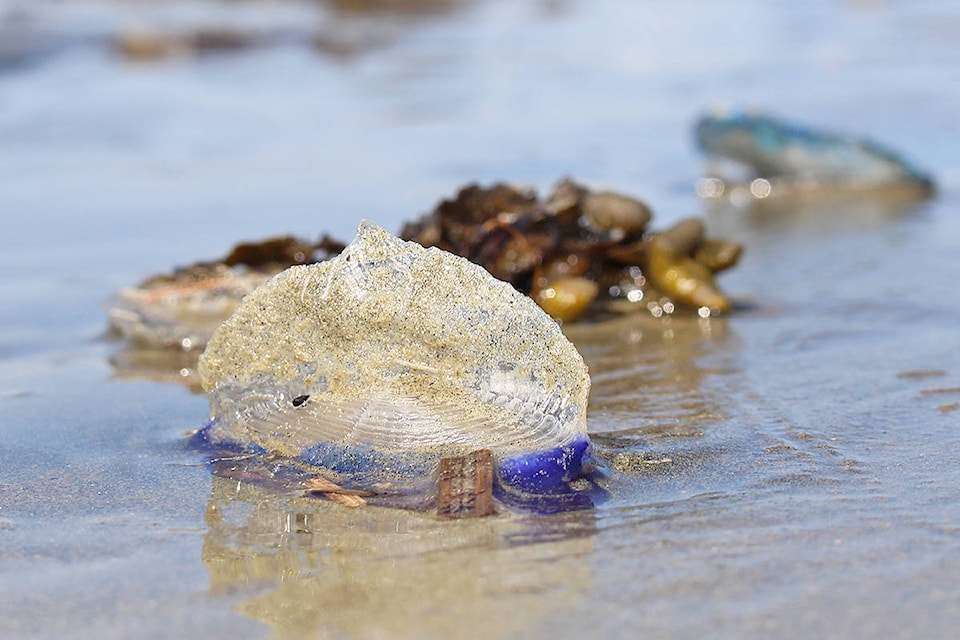They look beautiful on the beach, but the rising frequency of mass Velella velella strandings is a warning the West Coast needs to heed, according to Tofino mayor Josie Osborne.
Thousands of the small, jellyfish-like, creatures covered local beaches over the long-weekend.
“They’re actually colonies of animals called hydrozoans and they’re made up of hundreds of different polyps, little tiny animals all living together collectively,” Osborne, who had a career in a marine biology, explained. “They don’t have any form of locomotion, so they’re at the mercy of the winds and that’s why they have that stiff little sail on top of them. That’s made of chitin, which is similar to the stuff that our fingernails and hair are made out of.”
She said mass strandings of Velella velella were, at one time, a rare occurrence on the Coast and that a 2005 stranding shocked locals who had never seen the creatures before. In recent years though, those strandings have become a troubling annual tradition.
“It’s very commonplace now. Hardly a year goes by without seeing some Velella velella,” she said. “It is fascinating and it’s tinged with that sense of concern about, ‘Why are we seeing them so often?”
She said the creatures belong in warm waters and should not traditionally be associated with the West Coast’s frigid shores and that their ride in frequency is likely linked to climate change.
“We’re, as humans, responsible for so many green house gas emissions into the atmosphere that we’re seeing changes that would enable this kind of mass-stranding,” she said. “People need to understand that human activity has a big impact on the ocean and that the ocean is the major driver of weather. Seeing the Velella velella stranding ashore should remind us about that connection we have to the ocean. Not only because we want to care about it and do the right things, but also because the choices that we’re making are having a big impact.”
The small washed up carcasses are not expected to last long as they degrade quickly.
“All that’s left after a couple of days is the chitin sail, which some people mistake for plastic garbage,” Osborne said.
